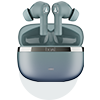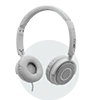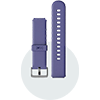So you’re sitting and listening to music. Suddenly the song overwhelms you, and you leave what you’re doing to purely listen to what’s giving you goosebumps. And you’ve just discovered a song that you’re going to listen to ON REPEAT till your ears bleed with joy (metaphorically, of course.) And you do that with your pair of beloved earphones/headphones of your choice from the plethora of options available today.

But have you ever sat and wondered how we can enjoy stuff like never before? We’ve always had earphones around, sure, since we had the walkman (we see you 90’s kids out there, for the new age kids, never mind.)
But now, we have wireless earphones, wireless headphones that automatically pair up with your devices, and god knows what the future holds in the way we enjoy music, something we clearly can’t live without!
So it’s only fair to try and understand the foundations on which our truly wireless, and truly great music experiences stand on. So for the curious boAtheads out there, we’ve researched the web and are ready to dive into the deep waters of wonder. Come, join us!
I can hear your heartbeat

That’s probably what the doctors told patients in the 1850s. Can’t figure out what we’re talking about? Turns out, the first ever in-ear devices were stethoscopes, invented in the 1850s, to listen to heartbeats and lungs by doctors. Mind blown? So was ours!
Hello from the other side
So before Adele became our collective ringtones,

French engineer Ernest Mercadier improved telephone receivers used back in the day, and patented a set of newer, and improved, in-ear headphones. These were made to be light enough to be carried while in use by the telephone operator, and that weighed less than 50 grams to be inserted in the ear, all with the rubber cover that we still use and tend to lose ever so often.
Early days of listening to music at home

Here’s where the advent of music at home began, as far as historical records can tell. In the 1890s, Electrophone (a British company) created a pair of massive earphones that connected below the chin by a long rod. (Thank god, we’ve come such a long way!) This was done to allow customers to listen to live feeds of performances at theaters and opera houses across London.
What’s cooking? Is it good looking?

If someone (or your own head) tells you you can’t do something productive sitting at home, think of Nathaniel Baldwin, who not only sent prototype telephone headsets for military testing, but also revolutionized the way we enjoy sound, and entertainment at home.
The headphones he sent to the Navy turned out to be much better than what they were using at the time for their radio communication.
Binaural beats and how it changed our lives
Now comes the time after World War 2.

The onset of stereophonics and commercial technology, record label EMI pioneered stereo recordings in the 1950s. Post which, the first commercial stereo headphones were created by jazz musician John Koss. What inspired him was how good a binaural audio tape sounded through a pair of military grade headphones.
The headphones had two vacuum-formed brown plastic cups with a three-inch speaker in each, protected by a light plastic cover and foam ear pads. And this design was then taken by other manufacturers around the world, and here we are today!

So the next time you plug in, and get ready to zone out, thank the beautiful invention that is now our best friend.
In the next blog, we’ll share what fascinates us about wireless technology in earphones and headphones. Stay tuned!




































